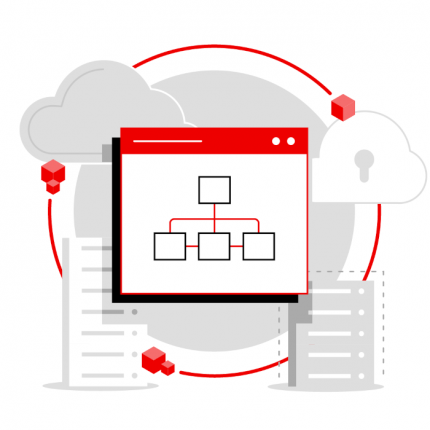Last year public cloud providers Microsoft Azure and Amazon AWS announced support for shared block devices, paving the way for Red Hat to provide support for Red Hat Resilient Storage Add-On on those platforms. After a period of careful testing, Red Hat announced support for Resilient Storage on each of these platforms with Red Hat Enterprise Linux (RHEL) 8.3 and later releases[1].
What is Resilient Storage?
The Resilient Storage Add-On lets users access the same storage device to each server in a group. The Add-On includes the Global File System 2 (GFS2) to support concurrent access, a cluster-wide locking mechanism to arbitrate storage access, a POSIX-compliant file system across 16 nodes, and Clustered Samba or Common Internet File System for Windows environments.
Red Hat offers GFS2 as part of our High Availability Add-On because it provides the capabilities needed for cluster members to access the same block device concurrently. GFS2 is a true 64-bit shared namespace hybrid cloud cluster filesystem with very-close-to-POSIX semantics and full cluster coherency. A lot of cluster scenarios require that sort of thing.

Red Hat finished testing and began officially supporting GFS2 on Azure a few months back — with good results. This moment provides new opportunities to safely run clustered applications on cloud servers that, until recently, would have needed to run in your data center.
This is a big change. When AWS started letting us build EC2 servers in the cloud so many years ago, they offered EBS (Elastic Block Storage) to save our servers’ state information, but the rule was that only one server at a time could access the block device. This made moving clustered applications to the cloud - the very ones that take advantage of GFS2 - impossible. We're pleased to be working with public cloud providers to help close this gap.
Resilient Storage and today's public cloud
Going forward, Red Hat and its partners plan to test and support our high availability offerings, including Resilient Storage, on AWS EBS, Alibaba Cloud, and Azure shared disks — and likely other cloud offerings as they announce shared block devices. This will help further expand the workloads that can use Resilient Storage.
An important thing to remember is that this doesn’t change what GFS2 does well and not as well. Read our technical brief for a description of those things that Resilient Storage is most appropriate for.
Some applications that run well on Resilient Storage include SAS, TIBCO MQ, IBM Websphere MQ, and Red Hat AMQ. In addition, web and file transfer protocol (FTP) servers have been successfully deployed on GFS2, as well as many custom applications. Failover active/passive network file system (NFS) servers also can be run on top of GFS2. Red Hat Enterprise Linux Resilient Storage Add-On includes CTDB, which allows deployment of active/active Samba (SMB) servers.
This moment also gives you and us a chance to further explore whether or not there are new ways to take advantage of GFS2 in this new context. We know very well what GFS2 is best at in the data center, but we’re confident that we and our customers will find new use cases in these new geometries - which is why so much of the online discussion about shared volumes in clouds mentions GFS2 specifically.
See the following links for more information:
-
Discussions regarding various cloud implementations:
-
Configuring Shared Block Storage on RHEL
关于作者
Bob Handlin has helped build and promote products in various parts of the tech industry for more than 20 years. He currently focuses on RHEL migrations and upgrades, but also assists with storage technologies and live patching.
更多此类内容
产品
工具
试用购买与出售
沟通
关于红帽
我们是世界领先的企业开源解决方案供应商,提供包括 Linux、云、容器和 Kubernetes。我们致力于提供经过安全强化的解决方案,从核心数据中心到网络边缘,让企业能够更轻松地跨平台和环境运营。

